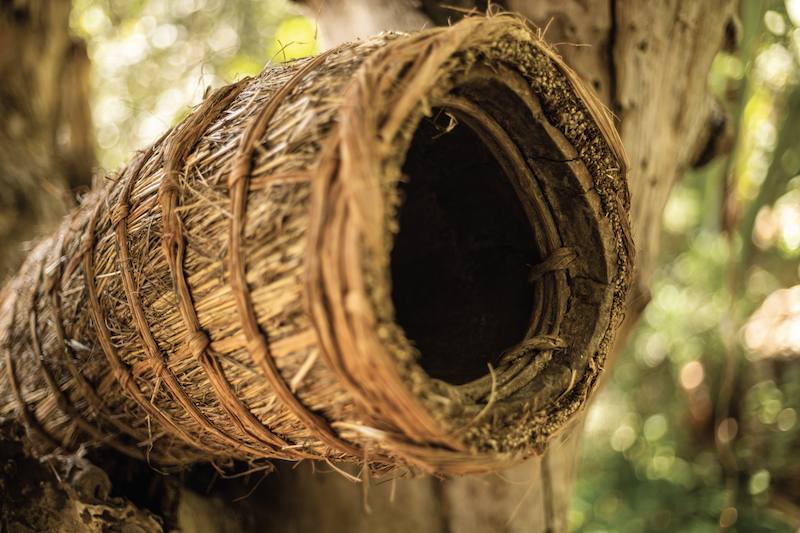Ethiopia is endowed with the highest number of bee colonies in Africa. Along with enormous and diverse natural vegetation and varying climatic conditions, they create optimal suitability for the production of many unique varieties of honey.
It is estimated that the history of beekeeping in Ethiopia dates back over 3,000 years and traditional beekeeping and the use of honey is interwoven in the very fabric of our daily medicinal, traditional, spiritual, and social interaction and holds a very special place within our society.
Accumulated indigenous beekeeping knowledge over many centuries plays a significant role in sustaining bee colonies and honey production in Ethiopia. Traditional beekeeping begins with the making of traditional beehives from locally available materials which could be mud, clay, hollowed tree trunks, straws etc. The construction of these hives differs from region to region and is an art that is passed down from generation to generation.
Most traditional beehives are single chambered cylinders, which are hung atop high tree branches. Beekeepers use different methods to attract queen bees into the hives. Once erected, the beehive might remain in place for many years allowing the harvest of honey about twice a year.
With varying ecological and climatic conditions, harvest time usually differs from region to region typically following the end of the dry season. Harvesting of honey from traditional beehives requires climbing high tree tops (done at night when the bees are less aggressive) and by smoking out the swarms, although experiencing several stings during harvest time is inevitable. The beekeeper then reaches into the hives to retrieve the honeycombs housing the sweet honey. Next the honey is squeezed into a hardened leather. Honey harvested from traditional beehives through this process is considered crude honey as it is a mixture of honey, wax, bee parts and pollen.
Most of the Ethiopian honey harvested goes into the production of Tej, a drink which is produced by the fermentation of honey and the drink is considered one of the oldest alcoholic beverages ever produced.

